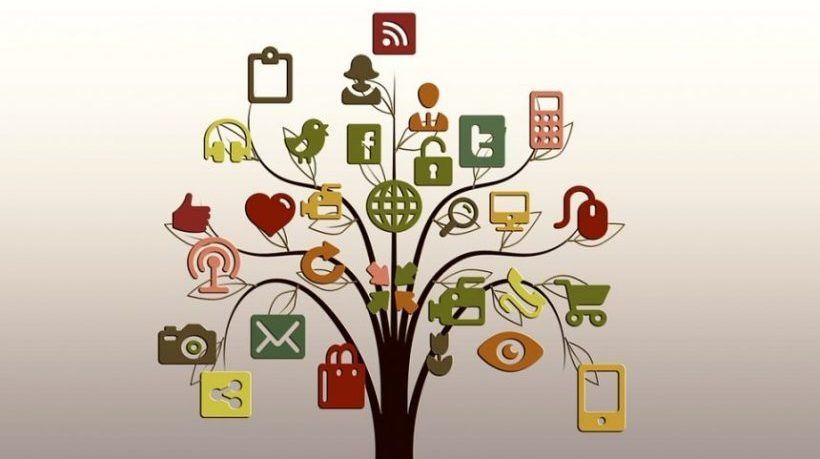Leveraging Social Media Platforms For Enhanced Learning
Today, the influence of social media is everywhere. From sharing comical content with our friends, enjoying the happy moments of life with family, and celebrating milestones in our careers, social media helps us a lot. Social media has connected us with the world smoothly and enjoyably. Another notable change the world is experiencing through social media is the evolution of our education system. Yes! The integration of social media with online education has transformed the way teachers are teaching their students and students are learning from different institutes.
Today, social media networks are not merely used as applications of entertainment to spend leisure time. Instead, they have become influential tools for education and collaboration opportunities. This article is a detailed account of the significance and benefits of social media in the eLearning industry. As well as this, we also discuss the potential challenges educational bodies and learners are experiencing while integrating social media. So, let’s begin an analysis of social media in eLearning now!
Possible Benefits Of Social Media In The eLearning Industry
From collecting helpful content to creating a virtual classroom and reaching out to professionals worldwide, social media helps both instructors and learners create strong connections and maximize results. Here are some notable aspects we need to mention:
1. Better Communication
Better and clear communication plays a crucial role in the betterment of the online education system. Social media networks are offering streamlined communication between instructors and learners. Almost all social media channels provide messaging space and audio or video call options. Even we can start group calling and participants can partake from across the globe in this conversation. This is the reason social media channels have transformed the way we collaborate with others for learning purposes.
2. Flexibility And Accessibility
We can access social media networks through a variety of devices, including smartphones, computers, and tablets. This easy access helps students to join important conversations and meetings anytime, anywhere. In addition, it helps students find and collect educational materials and other helping sources anytime, whenever they need them.
3. Rich Media Integration
Almost all social media channels are integrated with multimedia elements. For example, we can easily share and receive videos, images, and other interactive content. This variety of media options helps increase content quality and course materials, catering to diverse learning styles.
4. Easy Content Sharing And Collaboration
Social media platforms are easy enough to use that students of even high school level can easily comprehend and use them. For example, the major social media channels used to create content on a large scale in educational departments may include YouTube, Facebook, and TikTok.
Besides this, educational institutes are sharing collaborative opportunities to meet with other institutes and students to bring more improvements in different educational aspects. So, social media has made things possible to a large extent.
5. A Marketing Hub For Educational Institutes
Today, social media channels do not offer educational institutes opportunities to maintain their distance or online learning. However, they are helping them to promote their educational services. For example, almost all social media channels allow educational institutes to post content and run advertisements to attract more students and learners.
Just examine what social media channels students of particular education levels love to scroll. For example, if students you want to attract use a specific platform to search for study material, you must also choose the same platform and target your students accordingly. You must also share educational materials on this channel and other valuable content for your students. It will encourage students to follow you for further educational updates, helping you increase your followers, and leading to strongly organized virtual classrooms.
6. Free Of Cost
Last but not least, social media have also become important in the eLearning industry because almost all networks are free to use. First of all, they allow learners to sign up free of cost. Besides this, from sharing content to receiving educational updates, organizing virtual classrooms, and maintaining online attendance, you can perform each action without cost.
However, remember that some educational institutes, instructors, and professional coaches need to pay for social media only when they need to run specific advertising to attract more learners to their services.
Best Practices To Get The Most Out Of These Platforms
Here we would like to discuss some major examples of how social media practices are promoting the concept of eLearning:
1. Facebook Groups Of Communities
Facebook, with billions of monthly active users worldwide, has become the number one social media network. On Facebook, we can find groups for specific subjects, topics, and discussions, where millions of educators and learners join, participate, and share their thoughts. This helps us get specific information or data to complete our assignments and projects. We can have direct access to professionals to discuss specific topics and bring potential solutions that help us in academic as well as non-academic aspects.
2. Professional Networking Through LinkedIn
LinkedIn is a platform where we can easily find and collaborate with professionals in particular subjects and niches. We can communicate with them through text messages, audio calls, and even video conversations to share our thoughts and collect their reviews about a particular topic or discussion. LinkedIn also helps us expand our networks on a national as well as international level so that it brings career opportunities for learners during or after their professional studies.
3. YouTube For Tutorials
Another example of improvement social media brings to the eLearning industry is finding tutorials on YouTube. There are a number of professional instructors and educational organizations available on YouTube that share their thoughts in the form of video courses or tutorials on particular topics or subjects.
We can find professional or verified channels to learn languages, get coding classes, take tips on different academic and non-academic projects, and much more. We can also request them for any specific topics to discuss in the next video or tutorials. Through YouTube learning or tutorials, instructors or even students do not only build strong connections with like-minded people. They get more YouTube views to increase their credibility on the platform, unlocking monetization opportunities as well.
Challenges Of Using Social Media In The eLearning Industry
While social media platforms help educational institutes and students maintain online or distance learning smoothly, they come with a few serious challenges and concerns reported by both educators and learners. Here is what we have been facing throughout the online education journey through social media:
1. Distractions
Social media channels can distract students' attention. Usually, when students get notifications about their friends' activities and their favorite discussion other than education, they start exploring those types of content which may waste their productive time.
2. Overflow Of Information
On social media channels, learners sometimes get overloaded with information, making it overwhelming and challenging to process. Students need to struggle more to find more credible or authentic sources which is the biggest challenge in the academic context.
3. Privacy And Security
While using social media channels, maintaining their privacy and security of personal data has become a significant concern for many students. To ensure secure online interactions, educational institutes must establish clear guidelines and policies.
4. Maintaining Professionalism
Maintaining professionalism has also become challenging for educational institutes as social media encourages informal conversations. It can be maintained only when both instructors and learners are mindful of their interactions and behaviors while communicating with others on social media.
5. Inclusivity
Inclusivity is another big challenge because some students may not have access to social media or some may not feel comfortable using social media. So, educational institutes should provide those students with some alternatives to ensure the safest learning environment for them.
Conclusion
After the above discussion, we can conclude that social media channels are playing a crucial role in promoting online or distance learning. Instructors and learners are making improvements and building strong relationships on a national as well as international level. Moreover, the overall approach has also made educators and students able to showcase themselves as influential sources on the internet, increasing their credibility as well as revenue.









